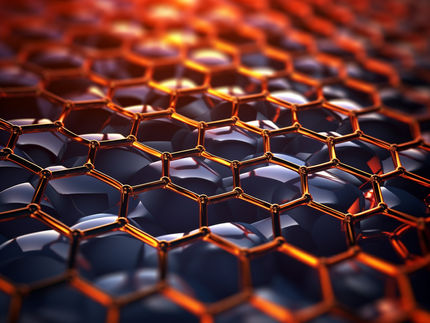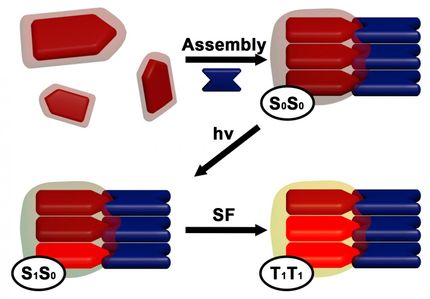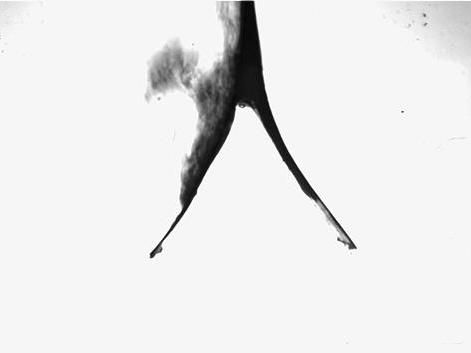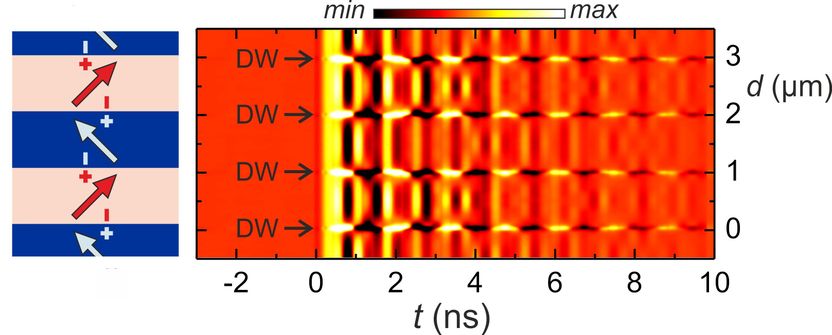New analysis method developed for nano and quantum materials
Using electron microscopy to create ultrafast movies of nano-processes
A slow-motion movie on sports television channels shows processes in hundredths of a second. By contrast, processes on the nanoscale take place in the so-called femtosecond range: For example, an electron needs only billionths of a second to orbit a hydrogen atom. Physicists around the world are using special instruments to capture such ultrafast nano-processes in films. Researchers at Kiel University (CAU) have developed a new method for such films that is based on a different physical concept and thus allows further and more precise options for investigation. To do this, they combined an electron microscope with nanostructured metallic thin films that generate very short light pulses. In a first experiment, they were thus able to document the coherent interactions of light and electrons in a semiconductor on film. Their results are published in the renowned scientific journal Nature Physics.
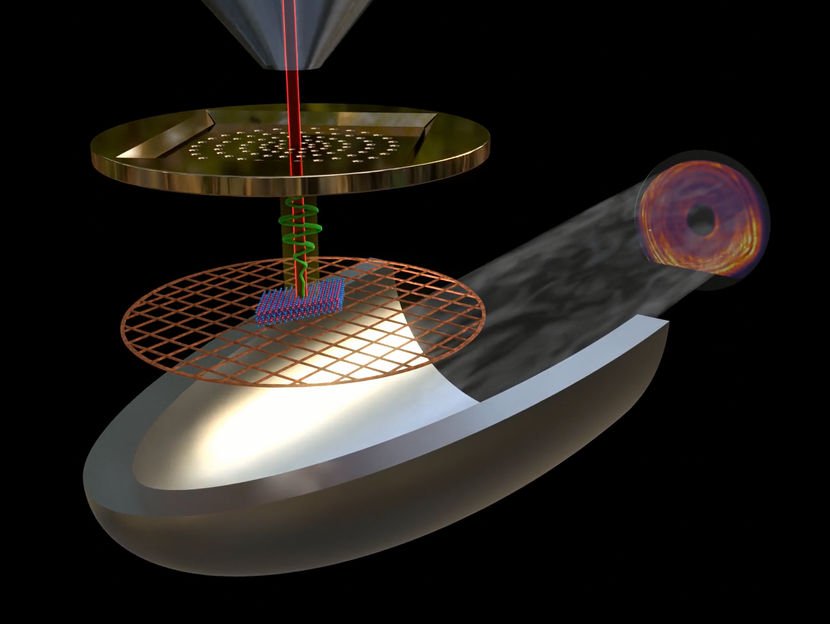
Schematic representation of the newly developed method for electron microscopes without lasers At the top, an electron (red trajectory) hits the sieve-like metal structure EDPHS ("electron-driven photon source") and generates a light pulse (green) by exciting surface plasmons. This hits the semiconductor sample at the speed of light and excites so-called excitons there. The electron hits the sample a little later and generates cathodoluminescence signals. The superposition ("interference") of the EDPHS and electron-induced radiation from the sample, shows the coherent interaction of electrons and photons. It can be detected by projecting the total emitted light pattern on a CCD camera.
© Masoud Taleb
New method is simpler and more cost-effective
Until now, movies showing ultrafast nano-processes have typically been produced using high-power lasers combined with electron microscopes. But only a few research groups can afford the large and complex setups. "Our concept does not require expensive and complicated lasers and can be easily replicated," says Nahid Talebi, Professor of Experimental Physics at the CAU.
Electron microscopes bundle electrons into a beam, accelerate it and direct it at a material sample. How the electrons pass through the sample or are reflected allows conclusions about the properties of the materials and the processes inside. “Electron microscopes have a significantly better spatial resolution than optical microscopes and make investigations in the nanometer range possible in the first place," says Talebi. The special components she has developed make it relatively easy to improve also the temporal resolution of electron microscopes and convert them to their ultrafast versions. By this nanoscale processes can now also be captured in ultrafast films on the femtosecond time scale without lasers.
With her new publication, Talebi not only demonstrates that her method works. Together with her research associate Dr. Masoud Taleb, she also provides experimental evidence for coherent interactions of photons and electrons in a semiconductor, which had previously only been described theoretically. The quantum material tungsten diselenide, WSe2, used for this purpose originates from a collaboration with Professor Kai Rossnagel within the priority research area KiNSIS (Kiel Nano, Surface and Interface Science) at Kiel University.
Nano-structured metal generates short light pulses
A central component of Talebi's concept is a special nanostructure looking similar to a kitchen sieve. It can be inserted into an electron microscope, where it functions like a light source, called “EDPHS” (electron-driven photon source). When an electron beam hits this metal structure, the hole pattern generates targeted, short light pulses that can be used to make fast films. To create the special structure the researchers drilled tiny holes of 25 to 200 nanometers into a thin gold foil. Talebi had precisely calculated the size and distances, because the light pulses only occur with a certain hole pattern. The "nanosieves" were produced in close collaboration with Dr. Mario Hentschel from the research group of Prof. Harald Giessen, University of Stuttgart. Together with colleagues from Amsterdam, Talebi had previously modified the electron microscope so that it can detect cathodoluminescence. These light signals are generated when fast electrons hit metal.
Interactions between electrons and photons documented in films
In the experiment described in the current publication, the short light pulses from the sieve-like nanostructures hit the semiconductor sample at the speed of light. Here they excite excitons, so-called quasiparticles. These are electrons that have detached themselves from an atom and are still coupled to the hole they created ("electron-hole pairs"). "If a short time later the slower electron beam also hits the semiconductor sample, we can see from the reaction of the electrons how the excitons have behaved in the meantime," explains Talebi.
The resulting cathodoluminescence signals from the superposition of the electron beam and the light pulses show a coherent interaction between electrons and photons.
To be able to capture these processes in a film, the researchers also integrated a piezoelectric crystal into the microscope setup. This allows them to precisely change the spatial distance between the light source and the sample, and by this also the temporal distance between the incident light pulses and the electrons. "In this way, images can be taken at different stages of the process and assembled into a film," Talebi summarizes.
Many years of preliminary work
Talebi was already working on a concept for creating femtosecond films with the electron microscope without needing a laser when she was a research associate at the Max Planck Institute for Solid State Research in Stuttgart. In order to combine electron microscopes with light and thus increase their temporal resolution, she received funding from the European Research Council (ERC) with an ERC Starting Grant of 1.5 million euros. Since 2019, the theoretical and experimental physicist has been realizing her project in her own research group "Nano-Optics" at CAU. One focus of this relatively young field of research is the interactions of light and matter at the nanoscale. A better understanding of this has, for example, already enabled particularly efficient quantum light sources that can be used to securely transmit encrypted information in optical circuits.
